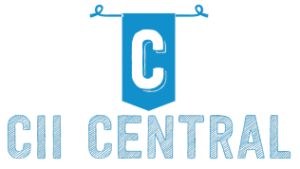In the realm of aged care operations, where the demands for high-quality care intersect with the pressing need for efficiency, supply chain optimization emerges as a beacon of transformation. The intricate web of logistics, procurement, and resource management forms the backbone of these institutions, yet inefficiencies within this system can balloon operational costs, diverting vital resources away from patient care.
By strategically refining supply chain processes, aged care facilities can unlock significant cost reductions, enabling them to enhance service delivery and improve the quality of life for residents. The journey towards optimization is not merely about cutting expenses; it’s about reimagining how care is delivered, ensuring sustainability and resilience in a sector that often grapples with budgetary constraints.
With a focus on innovative strategies and data-driven decision-making, aged care providers can navigate the complexities of their operations, ultimately fostering an environment where quality care thrives amidst economic challenges.
Understanding the Aged Care Landscape: Challenges and Opportunities

Navigating the aged care landscape presents a myriad of complexities that demand both innovation and adaptability. As the population ages, the sector faces mounting pressures from rising operational costs, regulatory shifts, and an ever-increasing demand for quality care.
Facilities must balance the need for compassionate, personalized services with the economic imperative to streamline operations. This scenario, however, is not just a labyrinth of challenges; it also offers a plethora of opportunities for organizations willing to rethink their supply chains.
By embracing technology and optimizing logistics, aged care providers can significantly reduce costs while simultaneously enhancing service delivery, ultimately leading to improved patient outcomes and satisfaction. In such a dynamic environment, the key lies in recognizing that efficiency and care can indeed coexist, paving the way for a more sustainable future in aged care.
The Role of Supply Chain Efficiency in Aged Care Operations

The role of supply chain efficiency in aged care operations is pivotal, serving as the backbone for delivering high-quality services while managing costs. In an environment where every dollar counts, optimizing procurement, inventory management, and distribution can drastically impact not just the bottom line, but also the well-being of residents. Imagine a scenario where timely access to essential medical supplies and nutritious food is seamlessly ensured, reducing delays that could affect patient care.
On the flip side, inefficiencies in the supply chain can lead to stockouts or excess inventory, both of which create financial strain and compromise service delivery. Thus, cultivating a well-oiled supply chain in aged care facilities not only streamlines operations but also enhances the overall experience for both staff and residents, promoting a healthier, more responsive caregiving environment.
Through strategic partnerships and smart technology integration, these facilities can continuously refine their supply chain processes, ensuring they are nimble enough to adapt to ever-evolving needs.
Key Components of Supply Chain Optimization

Effective supply chain optimization in aged care operations hinges on several key components that work in concert to enhance efficiency and reduce costs. Firstly, robust demand forecasting is essential; accurately predicting the needs of residents ensures that resources are allocated wisely—minimizing waste and avoiding shortages.
Then, theres inventory management, which becomes a balancing act of maintaining sufficient supplies while avoiding excess that ties up capital. Streamlined logistics and transportation methods add another layer, facilitating quicker deliveries and responsive adjustments to changing demands.
Additionally, leveraging technology—like data analytics and automated systems—can transform decision-making, providing real-time insights that empower managers to act strategically. Finally, collaboration among all stakeholders, from suppliers to care providers, fosters communication and trust, driving continuous improvement and innovation.
All these elements come together to create a resilient and cost-efficient supply chain that can adapt to the unique challenges of the aged care landscape.
Conclusion
In conclusion, optimizing the supply chain in aged care operations is a crucial strategy for reducing costs and enhancing service delivery. By streamlining procurement processes, reducing waste, and improving inventory management, aged care facilities can allocate resources more effectively, ultimately leading to more sustainable operations.
These efficiencies not only result in significant cost savings but also improve the quality of care provided to residents. For those looking to implement these strategies and enhance their procurement processes, click here for healthcare procurement to discover innovative solutions tailored to the unique needs of the aged care sector. Embracing supply chain optimization is not just a financial imperative; it is a key step toward delivering the highest standard of care for our aging population.




